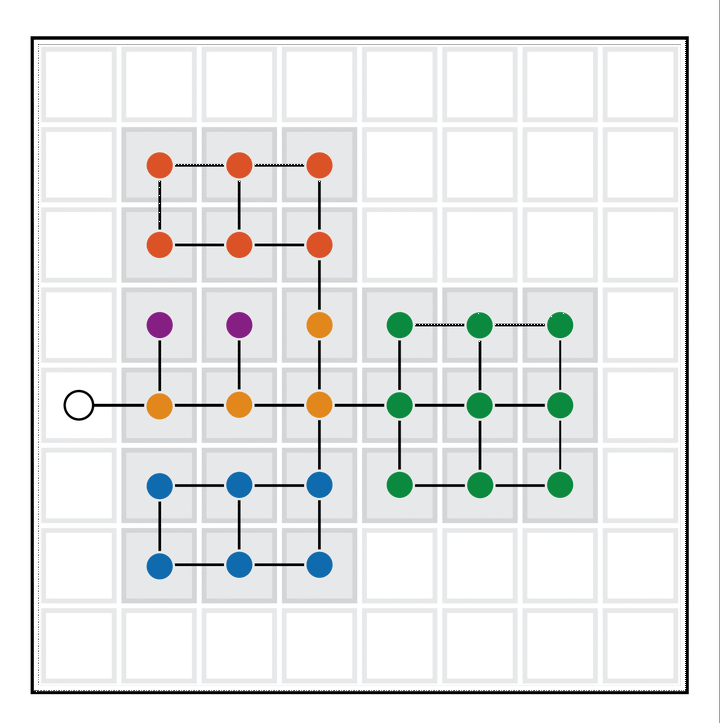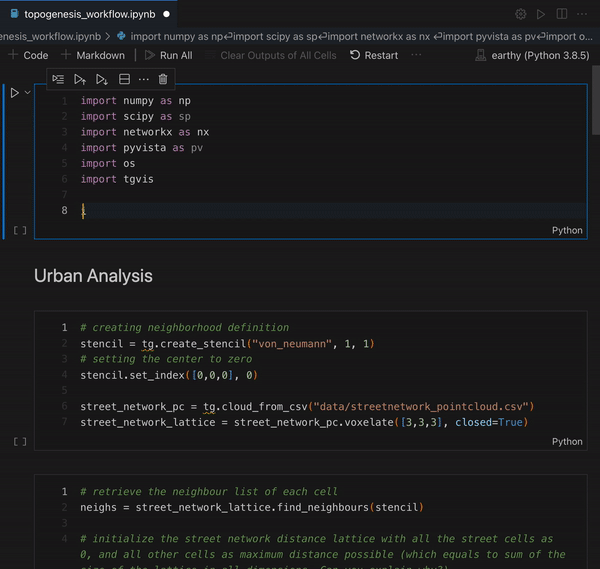
Team: Ir. S. Azadi, Dr.ir. P. Nourian
Note: The software is provided “AS IS”, without warranty of any kind.
topoGenesis is an open-source python package that provides topological structures and functions for Generative Systems and Sciences for various application areas such as:
- generative design in architecture and built environment
- generative spatial simulations
- 3D image processing
- topological data analysis
- machine learning
topoGenesis
aims to utilize the vast functionalities of fields (mathematical objects) in generative systems and sciences. Therefore it seeks to:
- offer basic mathematical functionalities on field data models
- offer functionalities of computational topology on top of the field structures
- facilitate the conversion between mesh-based data models and field data models.
- facilitate field simulations, whether governed by differential equations, spectral models or based on computational models (ABM)
- construct a bridge between spatial data models and tensor data structures to facilitate the utilization of the latest artificial intelligence models
Contents:
Mesh to Field: Rasterization
- Point Cloud Regularization
- Line Network Voxelation
- Mesh Surface Voxelation
- Signed Distance Field
Field to Mesh: Isosurface
- Boolean Marching Cubes
- Marching Cubes
- Surface Nets
Local Computation
Stencil / Kernels
- von Neumann neighbourhood
- Moore neighbourhood
- Cube neighbourhood
- Custom neighbourhoods
Universal Functions & Mathematical Operators (Numerical)
Field Simulations (Vectorized)
- Dynamic Systems (based on Differential Equations)
- Agent-Based Modeling
- Cellular Automata
topoGenesis is compatible with COMPAS - A framework for computational research in architecture and structures
